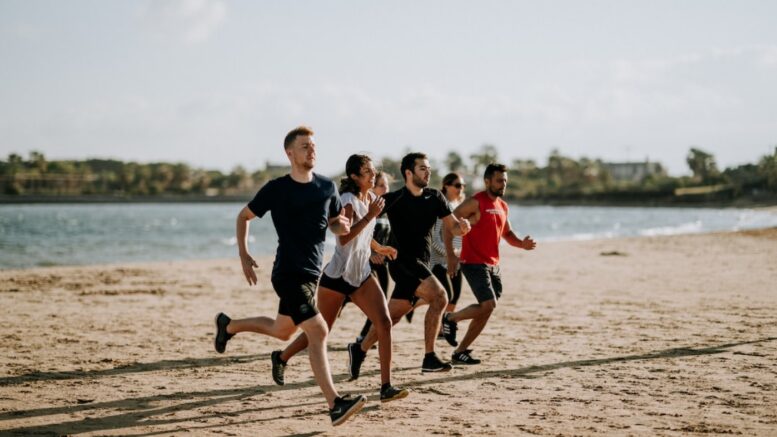Running is a powerful and invigorating exercise that not only enhances cardiovascular health but also contributes to overall well-being. However, the repetitive nature of running can lead to injuries and wear and tear on the body over time. In this post, we’ll explore innovative solutions and essential tips to help runners not only boost their performance but also prioritize their physical well-being.
Proper Warm-Up and Cool Down: The Foundation of Injury Prevention
To embark on a successful running journey, one must begin with a solid foundation – a proper warm-up. Warming up helps increase blood flow to the muscles, making them more pliable and ready for the demands of running. Dynamic stretches, such as leg swings and high knees, activate key muscle groups. Similarly, a thorough cool down is crucial for preventing injuries and reducing muscle soreness. Incorporate static stretches to enhance flexibility and promote muscle recovery post-run.
Footwear Matters: Invest in Quality Running Shoes
Your feet are your foundation, and investing in the right pair of running shoes is paramount. Visit a specialty running store for a professional fitting to ensure your shoes provide proper support and alignment. Consider the type of terrain you’ll be running on and choose shoes with the appropriate cushioning and stability. Regularly replace worn-out shoes, as old or ill-fitting footwear can contribute to a range of injuries, including shin splints and stress fractures.
Strength Training: Building Resilient Muscles
Beyond the road or trail, a comprehensive strength training routine is key to building resilient muscles and preventing injuries. Targeting core muscles, including the abdominals and lower back, provides stability and supports proper running form. Strength training exercises for the hips, quadriceps, and hamstrings help maintain balance and reduce the risk of overuse injuries. Incorporate bodyweight exercises, resistance training, and flexibility exercises into your weekly regimen for a well-rounded approach.
Listen to Your Body: Rest and Recovery
In the pursuit of peak performance, many runners overlook one of the most critical components – rest. Adequate rest and recovery time allow the body to repair and strengthen, reducing the risk of overtraining and burnout. Pay attention to signs of fatigue, persistent pain, or discomfort, and be proactive in addressing them. Incorporate rest days into your training schedule, cross-train with low-impact activities, and prioritize quality sleep to optimize recovery.
Cross-Training: Diversify Your Workout Routine
Embrace cross-training to enhance your overall fitness and reduce the strain on specific muscle groups. Activities such as swimming, cycling, or yoga provide a refreshing break from running while still promoting cardiovascular health and flexibility. Cross-training helps prevent overuse injuries, promotes muscle balance, and adds variety to your workout routine, keeping both body and mind engaged.
Nutrition: Fuel Your Body for Optimal Performance
Running places significant demands on the body, and proper nutrition is fundamental to sustaining peak performance and minimizing the risk of injuries. Prioritize a well-balanced diet rich in carbohydrates, proteins, healthy fats, vitamins, and minerals. Stay hydrated before, during, and after your runs, and consider incorporating energy gels or snacks for longer distances. Consult with a nutritionist to tailor your dietary plan to your specific running goals.
Biomechanical Analysis: A Personalized Approach
In the era of advanced sports science, runners can benefit from biomechanical analysis to identify specific movement patterns and potential imbalances. Professional assessments, often available at specialty running stores or through sports medicine professionals, can provide valuable insights. By addressing biomechanical issues, runners can make targeted adjustments to their form, reducing the risk of injuries and optimizing performance.
Seek Help When Necessary
While the above advice can help runners avoid injuries and reduce wear and tear on their bodies, nothing is foolproof. In the event that you’re experiencing trouble, it’s important to seek help from a professional. Whether it’s a massage for a pulled muscle or therapy for knee pain relief, the sooner it’s treated the easier it will be to recover and get back to doing what you love.
As a dedicated runner, your journey should not only be about achieving your performance goals but also about prioritizing your physical well-being. By incorporating these tips into your training regimen, you can strike a balance between enhancing your running performance and safeguarding your body against injuries and wear and tear. Remember, a holistic approach to running involves proper preparation, strength building, recovery strategies, and personalized care. Lace up those running shoes, hit the road with confidence, and enjoy a fulfilling and injury-free running experience.
